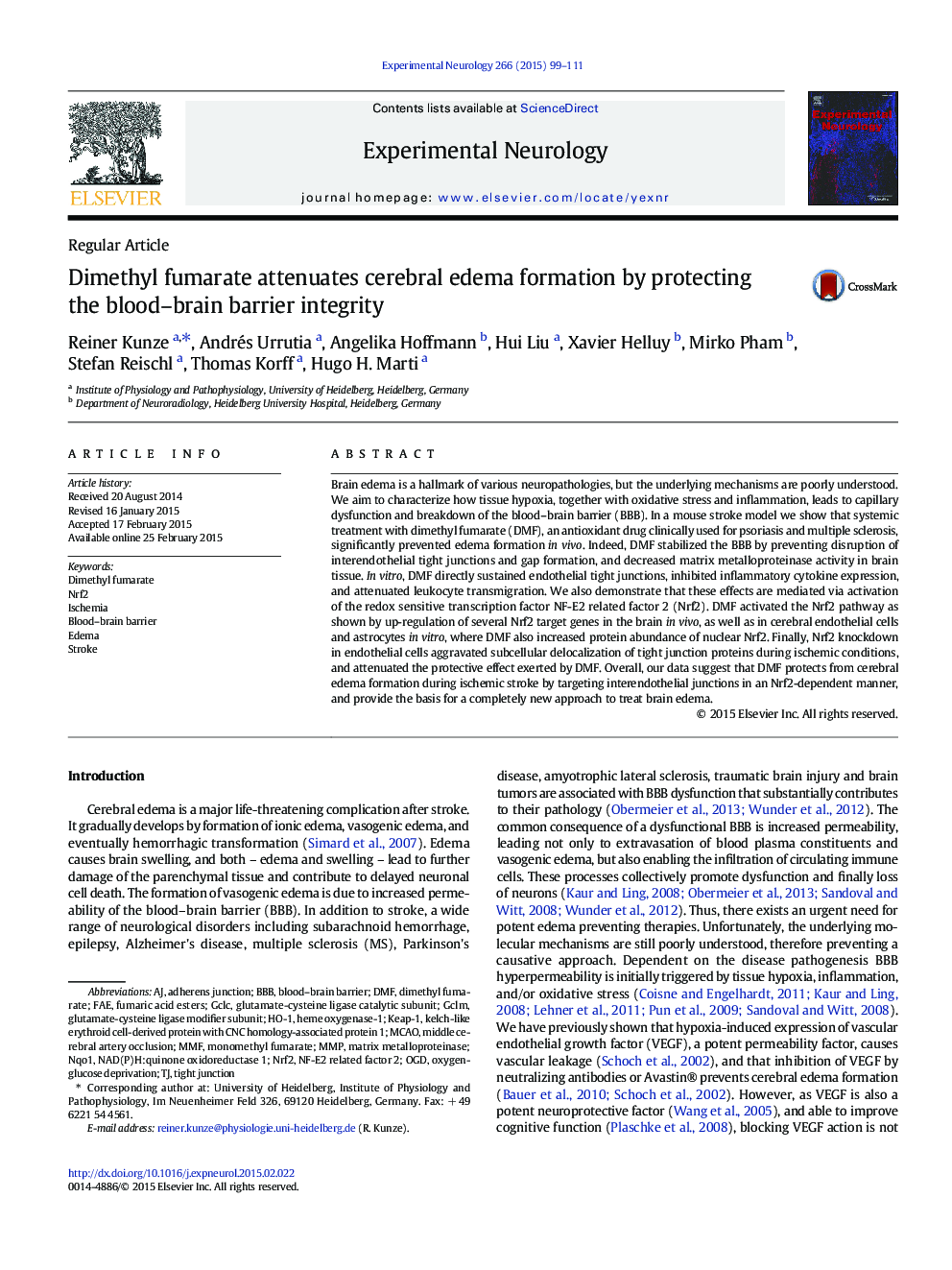| Article ID | Journal | Published Year | Pages | File Type |
|---|---|---|---|---|
| 6017444 | Experimental Neurology | 2015 | 13 Pages |
Abstract
Brain edema is a hallmark of various neuropathologies, but the underlying mechanisms are poorly understood. We aim to characterize how tissue hypoxia, together with oxidative stress and inflammation, leads to capillary dysfunction and breakdown of the blood-brain barrier (BBB). In a mouse stroke model we show that systemic treatment with dimethyl fumarate (DMF), an antioxidant drug clinically used for psoriasis and multiple sclerosis, significantly prevented edema formation in vivo. Indeed, DMF stabilized the BBB by preventing disruption of interendothelial tight junctions and gap formation, and decreased matrix metalloproteinase activity in brain tissue. In vitro, DMF directly sustained endothelial tight junctions, inhibited inflammatory cytokine expression, and attenuated leukocyte transmigration. We also demonstrate that these effects are mediated via activation of the redox sensitive transcription factor NF-E2 related factor 2 (Nrf2). DMF activated the Nrf2 pathway as shown by up-regulation of several Nrf2 target genes in the brain in vivo, as well as in cerebral endothelial cells and astrocytes in vitro, where DMF also increased protein abundance of nuclear Nrf2. Finally, Nrf2 knockdown in endothelial cells aggravated subcellular delocalization of tight junction proteins during ischemic conditions, and attenuated the protective effect exerted by DMF. Overall, our data suggest that DMF protects from cerebral edema formation during ischemic stroke by targeting interendothelial junctions in an Nrf2-dependent manner, and provide the basis for a completely new approach to treat brain edema.
Keywords
Related Topics
Life Sciences
Neuroscience
Neurology
Authors
Reiner Kunze, Andrés Urrutia, Angelika Hoffmann, Hui Liu, Xavier Helluy, Mirko Pham, Stefan Reischl, Thomas Korff, Hugo H. Marti,
